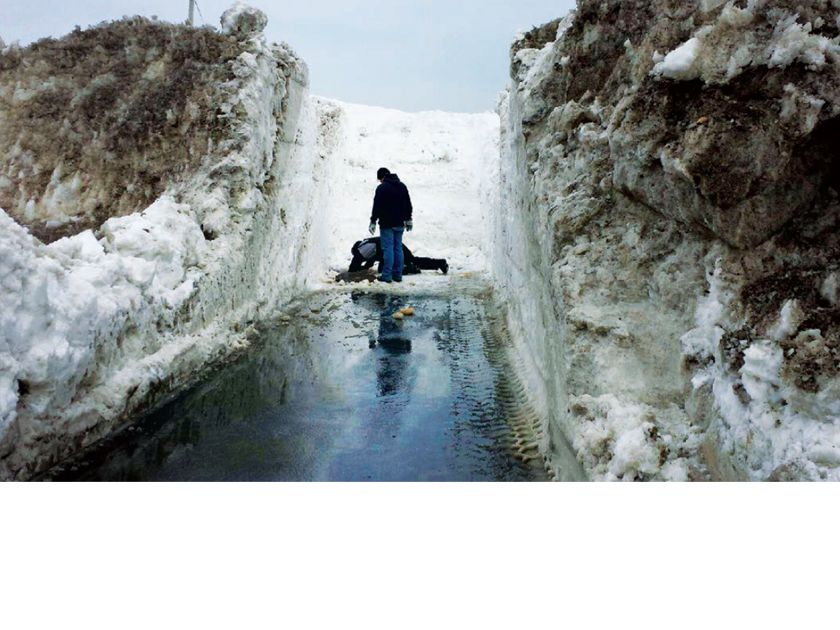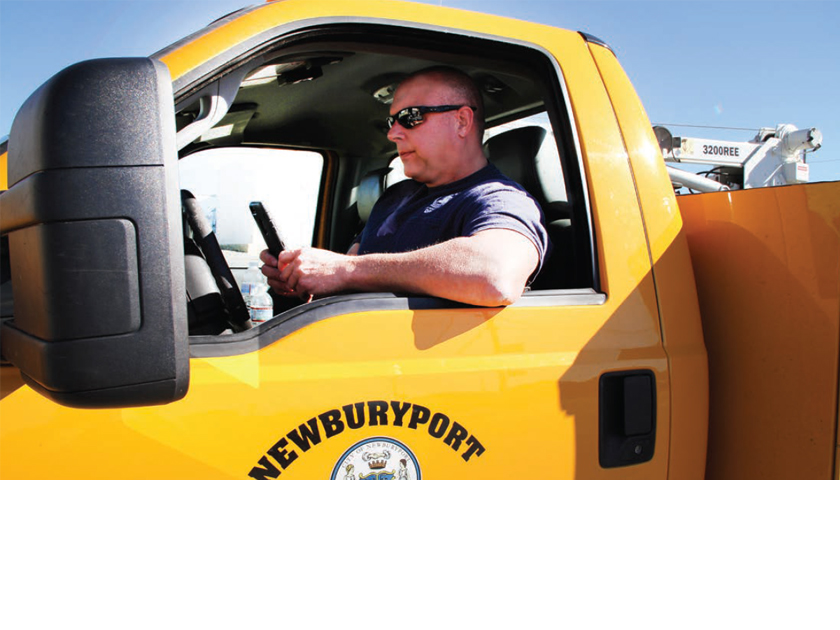An unprecedented series of weather events in January and February dropped about 110 in. of snow along the Massachusetts coastline in a four-week time frame. By comparison, the average annual snowfall is about 43 in. Snow buried everything. Travel and commerce stopped; there were not enough snowplows to adequately clear the roads. Meanwhile, temperatures plummeted to near-record lows. The governor declared a state of emergency. Not surprisingly, a number of public utilities were adversely affected. Blizzards followed by multiple days of sub-freezing temperatures often cause service failures. Power lines break, water pipes freeze, and devices such as grinder pumps and vacuum sewer valves can malfunction. Plum Island is a barrier reef island along the Atlantic coast about 30 minutes north of Boston. The city of Newburyport provides water and sewer services for residents there. As collection system superintendent for the Department of Public Services, I (Jamie Tuccolo) assembled the team that dealt with the incredible storm of 2015. It was a culmination of weather problems that were unexpected and unprecedented—a convergence of circumstances that crippled the sewer system on Plum Island.
Vacuum sewers systems like the one installed on Plum Island typically are very low maintenance, even in bad weather. During the winter of 2015, amid one of the blizzards, we began to get alerts on our standard alarm system indicating low pressure in a collection line. A low-vacuum alarm is an infrequent but normal event; a vacuum pit valve may sometimes stick in the open position, reducing vacuum pressure in that line. Our monitoring equipment identifies the low-pressure line, and then we find the exact valve that needs attention by listening to the air intakes, which are located near the valve pits along the line. Once found, a valve can be adjusted or replaced in minutes. However, during the blizzard of 2015, it was impossible to locate an individual valve or valve pit because the streets and sidewalks were buried under almost 10 ft of snow. The air intakes, which project above ground about 3 ft, were well below the snow piles, which were made deeper by the snow plows. Soon other valves were not functioning properly, likely due to low pressure within the collection line caused by the open valve; a domino effect. In order to get the system back online, our crews worked three shifts, 24 hours a day, seven days a week for three weeks. We contacted Airvac, the system manufacturer and an authority on vacuum sewer technology. It immediately sent two of its top people to help solve the problem, but they were stymied as well. There was simply too much snow to find the open valves. Within a few days, much of the sewer system in Plum Island was shut down. As a result, the city had to notify residents that sewer service was temporarily offline and that they were to be relocated to hotels until the situation was resolved.

